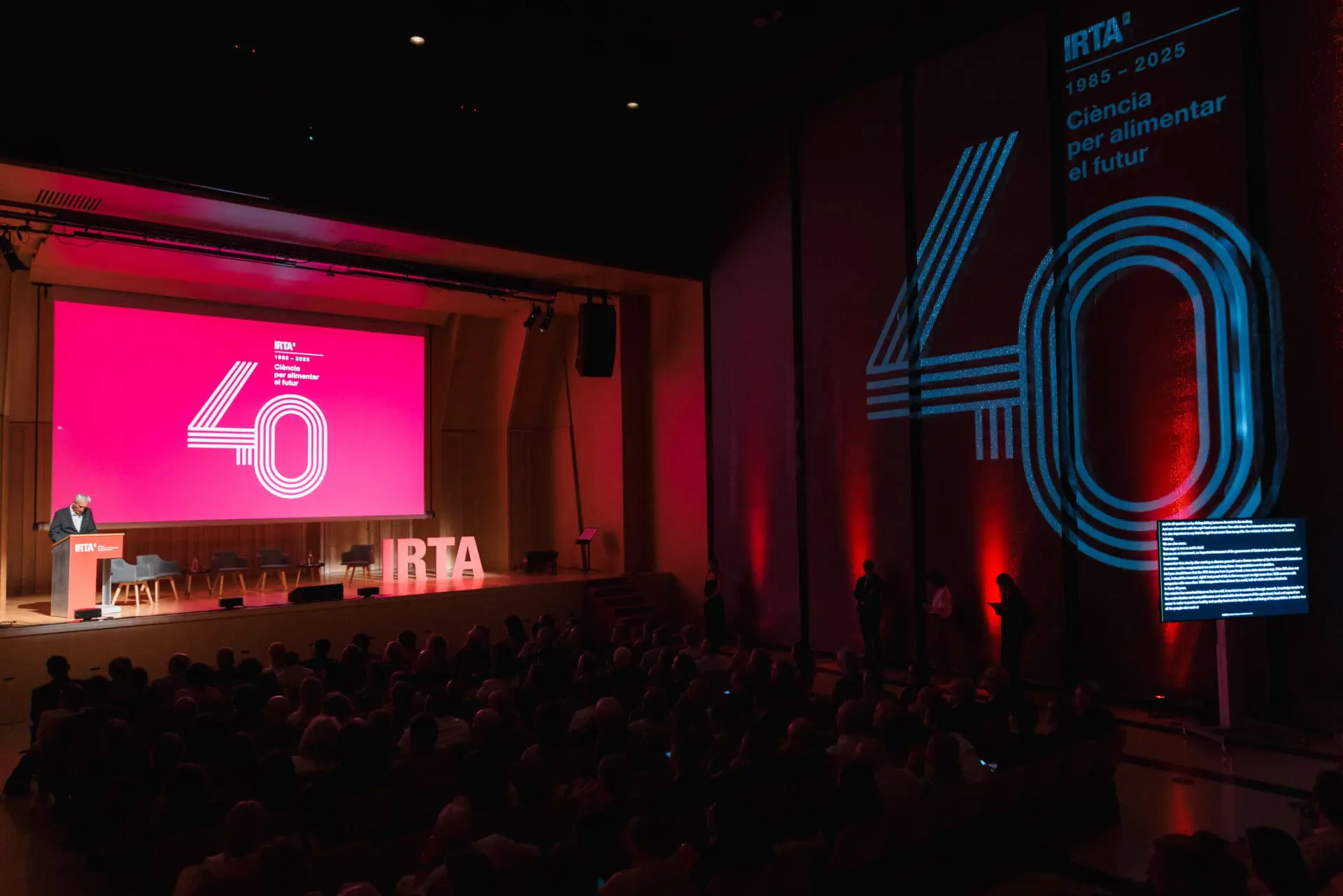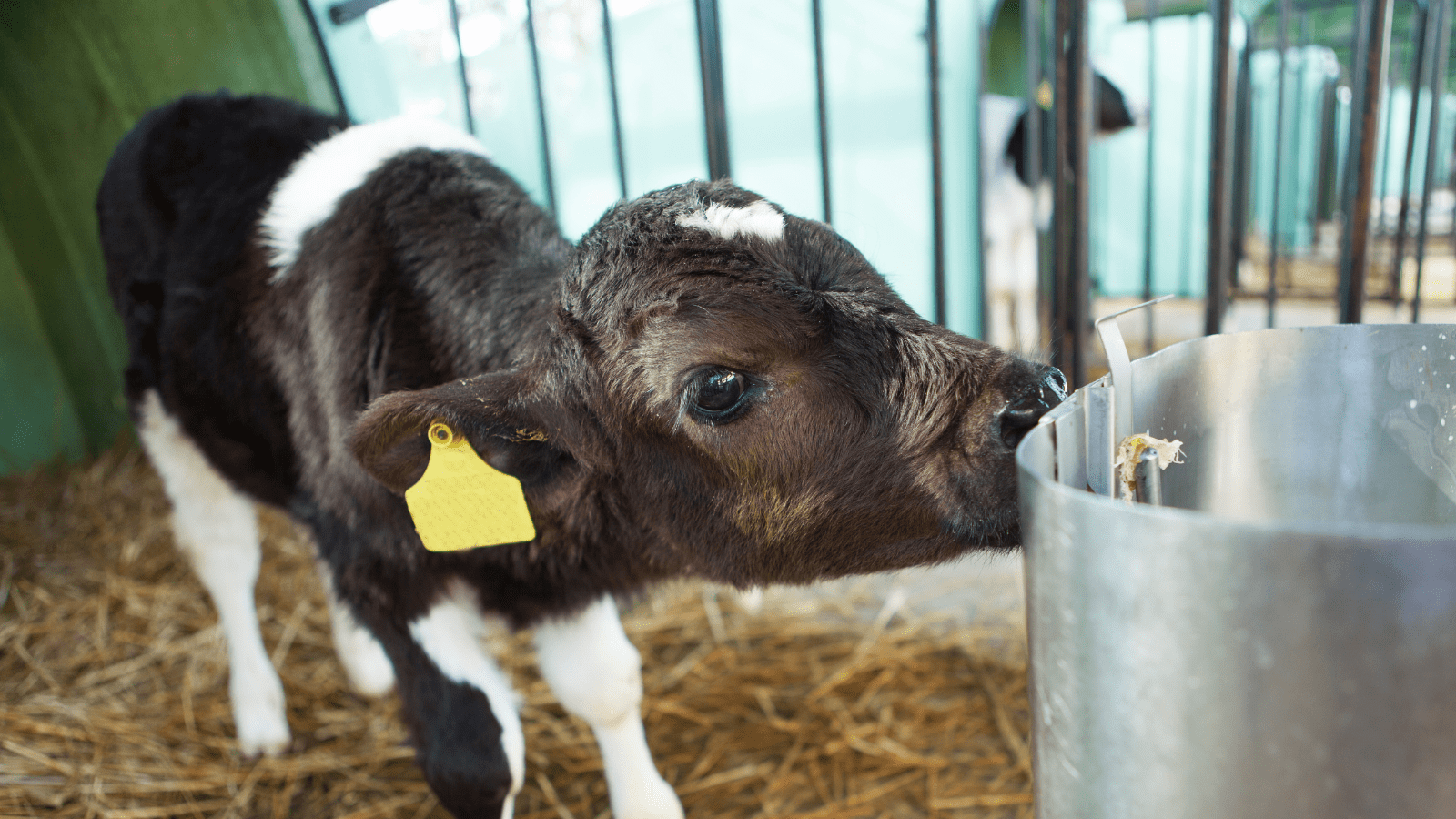
Teo Jové Juncà, a 26-year-old researcher, studied Biotechnology at the Autonomous University of Barcelona (UAB) and later completed a master’s degree in Animal Genetic Improvement and Reproductive Biotechnology. Following his master's, he decided to pursue a PhD, which he is now close to finishing within the Genetics and Animal Breeding program at the Institute of Agrifood Research and Technology (IRTA). On December 9th, Jové, along with seventeen colleagues who are also completing their doctoral theses at IRTA, presented their work at the Torre Marimon auditorium. He was recognized by the attending researchers as the one who delivered the best presentation. We took the opportunity to interview him.
Congratulations on the recognition! How did you experience it?
When the voting results came out, it took me a while to process it. I’m extremely happy. The award is a big deal: an open-access publication. This means that the scientific journal where my article is published will not profit from selling access to it. Instead, IRTA will cover the cost that the journal would typically expect to earn from selling it.
So, like a sponsored article in a newspaper?
More or less, but not exactly. To publish open-access in a scientific journal, you still have to go through all the necessary peer reviews.
In short, you'll be able to publish an article from your thesis as the first author, and anyone in the world will have access to it.
Open access aims to break down barriers in science. Many journals publish research behind a paywall. In fact, nowadays, many public funding calls already require you to publish in open access.
“Open access aims to break down barriers in science. Many journals publish research behind a paywall.”
Until your article is published, can you explain your thesis in simple terms? You mentioned pig blood in your presentation.
When we get a blood test, we see a list of all the results. We are doing the same with pig blood, closely analyzing certain immune cells to assess their ability to consume elements that could be harmful to pigs’ health. But we don’t just look at cells; we also examine hormones related to stress levels and other elements like iron and platelets, which may be linked to immunity.
In short, we are analyzing all the parameters in a blood test—some in more detail—and we aim to relate this to pig genetics to understand its influence.
Can you give us an example?
Pigs with a specific DNA mutation have lower levels of cortisol, a stress hormone.

And you don’t just look at DNA; you study how this code translates into specific characteristics.
Yes, that’s gene expression.
Is it the same as epigenetics?
Not exactly. If you’ll allow me a quick biology lesson…
Of course!
In our bodies, we have DNA, which is like a book containing instructions to create and operate all parts of an organism. This is a precious material for cells, and it is stored securely in the nucleus. DNA contains all possibilities—it allows a cell to be anything from a neuron to a muscle cell.
For the information in DNA to travel from the nucleus to the parts of the cell where it will be read and acted upon, there is a messenger called RNA. RNA is a temporary copy of a part of the book. So, it's crucial to understand which parts are being copied, or in other words, expressed. Each cell copies and sends out only what it deems appropriate at a given moment. And that is what we are studying.
(…)
In contrast, epigenetics is not about copies; it’s more like sticky notes and highlights inside the DNA book in the cell nucleus. These notes say things like, “This doesn’t work, erase it,” or “This is important, highlight it in fluorescent and make more of it.” Epigenetics tells the cell which parts of the book matter, and based on that, the RNA copies are made and sent out of the nucleus. We are reading these temporary copies that are being sent out.
Which pigs are you working with?
We collaborate with a company in Girona, Selección Batallé. They have a line of pigs from the Duroc breed. These pigs have many of the quality traits of Iberian pigs while maintaining good growth and production rates, making them affordable for the general public. Batallé breeds these pigs with other breeds to produce a high-quality commercial product. In our case, we studied the blood of purebred Duroc pigs.
And what’s the purpose of all this?
Our ultimate goal is to study all these blood characteristics, link them to immunity, identify which mutations or genetic variants cause changes, and, based on that, develop a pig selection program.
I always say that our research group runs a kind of Tinder for pigs. Since we know the profile of each pig, we want to pair them in a way that makes future generations more robust—meaning pigs that are more resistant to diseases, stress, and environmental changes.
Both pigs and piglets, right?
Yes. We want to identify which mutations and genetic markers determine whether a pig is more or less robust and use selective breeding to maximize the number of resilient animals. Recently, the European Union banned the preventive use of antibiotics in these animals, so we need to ensure they are strong enough to resist infections or recover well from a cold.
“We want to identify which mutations and genetic markers determine whether a pig is more or less robust.”
Have you been able to improve conditions on farms?
So far, we have identified several promising genetic variants that make animals more robust. Batallé is already incorporating them into their selection systems. These are preliminary results, and we are waiting to see how it turns out.
Could your research be applied to human health?
Pigs are often used as models in human health research. Everything we discover could potentially be relevant to human health, but it would need further validation. For example, we published a scientific article on one of the genetic variants I mentioned, and almost simultaneously, another study was published showing that the same genomic region in humans contains a regulator that might be involved in cardiovascular diseases.
Since you joined IRTA, alongside your thesis, you have contributed as an author to several scientific articles, all related to the genetic traits of pigs and their immunity or nutrition. All of this is part of the Animal Genetics and Breeding program.
As I mentioned before, we run a sort of Tinder for animals. We act as matchmakers for selective breeding, hoping to bring benefits to future generations.
Only for pigs?
Our group also works with rabbits, and some colleagues are exploring the microbiota of ruminants.

One of IRTA’s key characteristics is that its research is very hands-on, with strong connections to the industry. Is that an incentive?
Absolutely. Our group manages a database called BDPorc, which includes producers from all over Spain. We collaborate with them, and this helps us understand the sector in a way that is much more tailored to its needs. Many collaborations emerge from this network.
How did you end up at IRTA?
During my master’s, several IRTA professors taught courses, and I really liked what they explained. When the time came to choose an internship, I decided to come here. I liked the environment and the work being done, so I applied for the PhD.
Without a scholarship, it must be tough, right?
A PhD is bureaucratically complicated because it’s a mix between being a worker and a student. Sometimes you get the best of both worlds, and sometimes the worst. You’re in a kind of limbo. You want to advance your training and earn a degree, but you do it as both an employee and a supervised researcher. A PhD is like a very long internship, and there’s no requirement for them to pay you. That’s where scholarships come in—without them, doing a PhD in science is very difficult. In my case, IRTA provided me with a scholarship, so I have a more stable situation than many of my colleagues.
What is your daily routine like?
My PhD is mainly focused on data analysis because, during my master’s thesis, I already generated all the genetic expression data in the lab. Around 80% of my work involves being at my desk, using computers and analysis tools. On the other hand, there are PhD students who practically live in the labs!
How much time do you have left to finish your PhD?
I’m supposed to finish in 2025, but my research group has given me an extension to continue my research a bit longer and enrich my thesis. Later, this will be valued in both the job market and the academic field. One thing is clear—if you finish a PhD, it’s because you’re fueled more by passion than by money or job prospects.
“If you complete a PhD, it’s because you’re fueled more by passion than by money or job prospects.”
What would you like to do next?
I’ve always loved academia, and I’d like to become a professor. My ideal path would be to do a postdoc abroad, which is necessary to teach at a university. But I’m not ruling out any career options, whether in companies or research centers. Life takes many turns. For now, I’m enjoying research.
Speaking of the future. We are at a time when there is a lot of discussion about the sustainability of terrestrial animal food production, and we are in a region that produces a large amount of pork, much of it for export. At the same time, society is becoming increasingly aware of animal welfare. How do you think the production and consumption of animal-based food will evolve?
We are making progress in sustainability, in production efficiency, and in improving animal welfare. We are making great advancements. With our animal welfare colleagues, we collaborate to genetically monitor stress. With the nutrition team, we study efficiency to avoid unnecessary costs. Some of our colleagues study genetic markers related to the chemical composition of meat, such as fat composition.
I believe that, in the future, animal production will shift more towards prioritizing quality over quantity. Many people are already demanding this: animals raised in excellent conditions that provide higher-quality food in a more efficient way.
IRTA could play a key role in this.
Yes.


